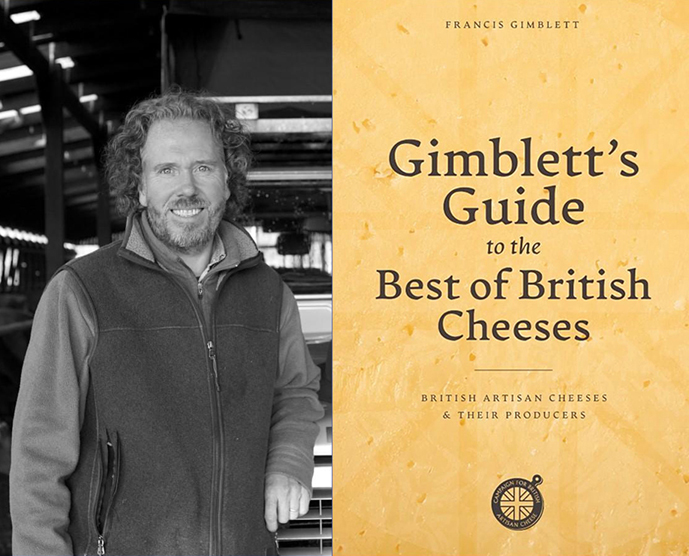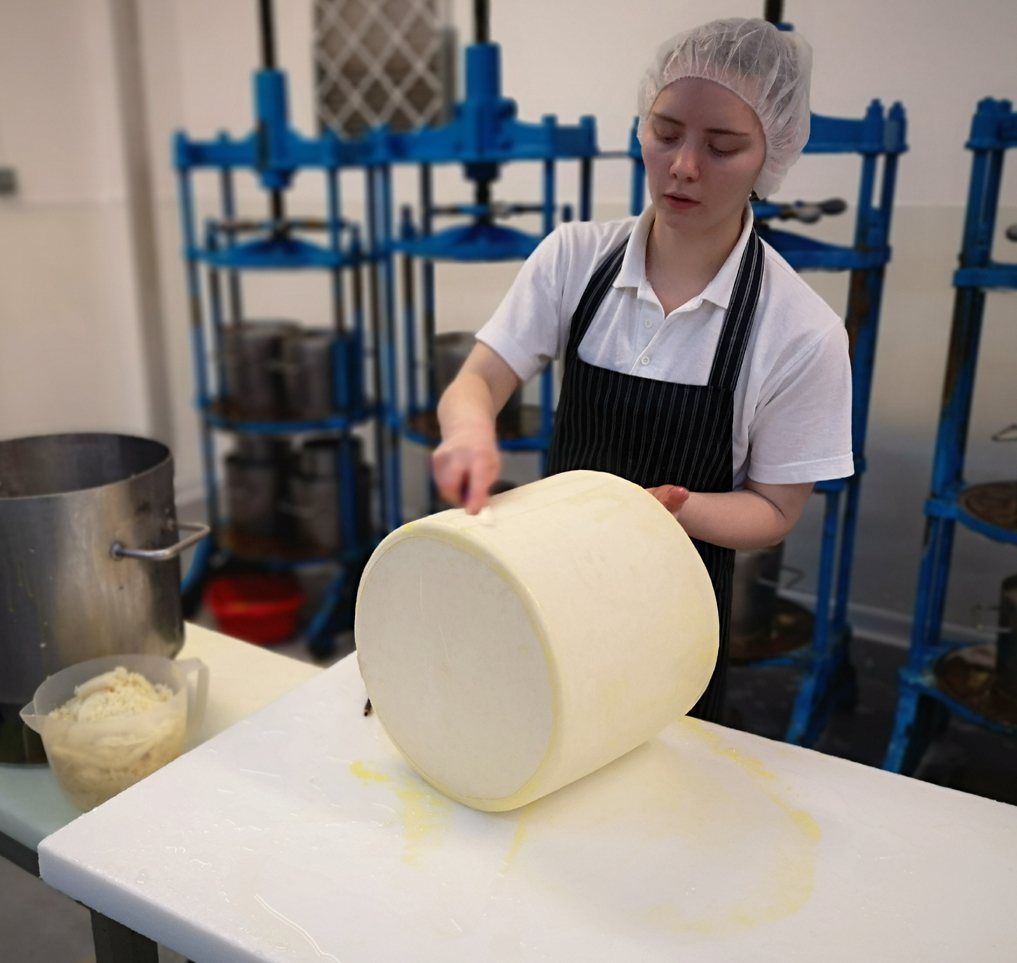
It has been a while since I’ve reviewed any food based books, so when I was given an opportunity to review this one I jumped at it. I always tell publicists and publishers upfront that I will give their book an honest and open review.
The subject of British Cheeses has come more into focus since the pandemic caused the lockdowns which thankfully in the summer of 2021 is receding. Many artisanal cheese makers had a difficult time when the UK went into lockdown, most don’t produce enough to supply supermarkets, so they sold most of the the cheese they make to restaurants, hotels and cheesemongers, so when lockdown came, the problems multiplied quickly.
Some small cheese producers who own their own herds were washing milk down the drain, rather than make cheese they could not sell. On the upside, events like British Cheese Weekender held May 2020 helped raise awareness of the many handcrafted cheeses now made in Britain.
Author
Francis’ passion for food and drink is perhaps the bedrock of the journey he’s been on. From training to be a chef, then sommelier, then wine brokering and wine making. In 1997 Francis with his wife Pam formed a company called Taste Of The Vine offering wine tastings; pairing wines with cheeses and then branching out into gin, real ale and whisky. They have staged 3,000 tasting events in 47 countries over 23 years. In 2014 his passion for cheese over took all others, and Francis and his wife started Gimblett Cheese after two years of research and trials. Starting with a washed-rind cheese modelled on the output from ancient monasteries.
This passion for artisanal cheeses led Francis to the idea of creating an informative yet easily digestible guide book that people could dip into. The idea of a book began late in 2018, one he initially thought he could complete in the comfort of his office using the time afforded to him during his own dairy refurbishment. But as he began to research he soon realised that there were almost 500 artisanal British cheeses to consider, making the task unachievable, so Francis made the decision to just include the very best of the best in his guide. After much deliberation the list of cheeses had been culled to 300, produced by 100 cheesemakers.
Sleeping on top of a Land Rover
Francis decided the fairest way to taste the cheeses was in situ so he could taste them at the source, and at the same time interview each cheesemaker. So he set himself the task to tour 100 Artisanal cheesemakers in 100 hundred days and to keep costs down Francis decide to sleep in his roof tent on top of his Land Rover

Gimblett’s Guide to the Best of British Cheeses
This book is a comprehensive guide to 80 of the finest cheesemakers and over 230 cheeses, including tasting notes and drink matching suggestions. The author had the good sense to include the website addresses and social media accounts for each cheese producer, making it easy for the reader to seek out further details about a cheese that takes their fancy.
The author has also included a useful key that explains what type of milk is used and whether the cheese is produced from milk from single herd and whether the milk is pasteurised or unpasteurised. In cheese categories Francis explains why cheeses differ and the process of how cheeses are made. Again this section is very informative but with a lightness of touch that leaves even the novice wanting to read more.
Wonderful stories from the cheese makers
At the start of each entry is a wonderful tale that tells the readers about the trials and tribulations of the artisanal cheesemakers. Some entries include a snippets of history, such as the fact that most cheeses in Britain used to be made by monks before the dissolution of monasteries by King Henry VIII. Or the story of how Lancashire cheese is produced using an age old technique of “buttering up”. Due to Wallace and Gromit fame many of you will have heard of a cheese called Stinking Bishop, a pungent perry-washed soft cheese named after a variety of pear grown on the farm, which in turn was named after Fredrick Bishop, a 19th century local farmer known for his bawdy behaviour.

Vegetarians Cheeses
Reading any food book is a journey of discovery. I was surprised that many of these top artisanal cheeses are made using vegetable rennet, making this book a great source of information for vegetarians too! For example, outstanding multi award winning cheeses like Barkham Blue made by the Two Hoots dairy in Barkham Berkshire.

The humour of food producers
Just like being a chef, master cheesemakers in Britain show they have a sense of humour, in the face of the challenges of creating something great, when they come up with wild and wonderful names like “Minger” made by Highland Fine Cheeses or one of their other cheeses named “Blue Murder”. The famous Cornish Yarg which I thought has a Cornish sounding name before I found out it is just the creator’s name Alan and Jenny Gray spelt backwards.
Covid Effects
Like for many small businesses the Covid pandemic has certainly made artisanal cheesemakers understand the need to get their own websites up and running, and not be so reliant on fine dining restaurants to sell their wares. But for small producers it is always a juggling act between making the cheese and making time to “bang the drum” to tell the world about their product. An internet presence helps them share their stories with the world, and hopefully Gimblett’s Guide can broaden their customer base so they can flourish.

Conclusion
To me the essence of a good food book is one that shares stories that connects the food to the reader. Francis effortlessly does that with his use of vignettes of each cheesemaker, sharing their passions, trials and tribulations, leaving the reader feeling invested and yearning to try the cheeses that have been made with such endeavour.
This invaluable guide also imparts the passion the author has, not just for artisanal cheeses but for the necessary components that are needed for its survival and for it to flourish. One such ingredient we all tend to overlook is artisanal quality milk and the growing demand for it, against a backdrop of a shrinking number of UK dairy farms. In 1997 we had 35,741 dairy farms and by 2017 that number was down to 12,960.
Gimblett’s Guide to the Best of British Cheeses is quite an achievement, very detailed, almost encyclopaedic in its scope and yet at the same time manages to be so accessible to the layperson. I heartily recommend this book, not just to lovers of cheese but to anyone who shares a passion for food.
You can buy Gimblett’s Guide to the Best of British Cheeses at these cheesemongers.
Paxton & Whitfield
George & Joseph
George Mewes Cheese
The Cotswold Cheese Co
Or direct from Francis Gimblett here.
This written content may not reproduced without permission ©Kevin Ashton 2021
I would go nuts on a trip like that – and probably add ten pounds! I do love all sorts of British cheeses – blue and Stilton are favorites, along with Wensleydale (many of which we sampled on-site).
LikeLiked by 2 people
These days there are a growing number of artisanal cheeses in both the US and Canada. A great place to learn more about US artisanal cheeses is https://www.cheesesociety.org/
Hope you are doing well Noelle?
Perhaps a death by cheese wheel, for your next murder mystery, if you haven’t already written it? Cheese competitions can get pretty serious these days!
LikeLiked by 1 person
I didn’t know that! But thanks for the idea – it’s a great one!
Doing well, although more people we know are getting covid – I suspect he lambda variant – but only mild because they’ve been vaccinated.
Stay well!
LikeLiked by 1 person
Looks like a great book. Thanks!
LikeLiked by 1 person
Thanks Katelon, it is always good to hear from you. I hope you are well in Washington state?
LikeLiked by 1 person
Yes, doing well. The heat and smoke were unpleasant but it is cooling off some. Hope you had a great summer.
LikeLiked by 1 person
I do worry about the growing number of forest fires around the world. Not just because of the devastation they can cause, but because the burning forests give off a lot of greenhouse gases that help to raise the global temperature, thus creating the chance of more forest fires.
Stay safe.
Warm Wishes
Kevin
LikeLiked by 1 person
Yes! The work I do daily is to shift the planet. Just climate alone is a disaster…floods, droughts, fires, pollution, high temperatures. And there is so much more that needs to change in our world.
Warm wishes, katelon
LikeLiked by 1 person
If only we all had politicians and business leaders who understood that the Status Quo is no longer an option.
LikeLiked by 1 person
If only we all had politicians and business leaders whose intention was to serve the greater good of ALL and the planet. Presently, most of them have an agenda of power, greed, and control.
LikeLiked by 1 person
I love British cheese!
LikeLiked by 2 people
Thanks Paulinell, do you have a particular favourite?
LikeLike
Hard to choose just one, but crumbly, tangy Cheshire does it for me ……
LikeLiked by 1 person
mmm! Yes a good Cheshire cheese is a thing of beauty, firm and dense but crumbly at the same time changing colour from golden towards the crust and getting paler in the middle. The slightly salty taste is distinctive to the area the milk comes from, as cows feed on the rich pastures of the Cheshire Plain, with its underlying rock salt deposits. Did you know in the 18th century the Royal Navy stocked all their ships with Cheshire cheese.
LikeLiked by 1 person
Very interesting, thanks for the info!
LikeLiked by 1 person
You are most welcome. 🙂
LikeLike
Great article Chef! This has inspired me to want to go out and look at some different cheeses, so is there a list of British cheese mongers that you know of please?
LikeLiked by 3 people
This is far from complete list of UK cheesemongers but it is a place to start. https://www.petersyard.com/journal/best-cheesemongers-uk/
If you are really keen you might also find this site useful.
https://academyofcheese.org/
The Academy is not just about UK cheeses but has cheeses from around the world. It is a great place if you want learn about tasting cheeses, either virtual or classroom courses.
LikeLike
Reminds me of the Church of England vicar, who when he saw the plate on the Church lunch buffet table, said, “What a friend we have in cheeses.”
LikeLiked by 2 people
I’m sure I’m seen that on a T-shirt! 🙂
LikeLiked by 2 people
Nice…
LikeLiked by 2 people
Thank you 🙂
LikeLiked by 1 person
Lovely review!
LikeLiked by 1 person
Thank you, so glad you liked the review. Writing it was a journey of exploration for myself about the many wonderful cheeses that are now made in the UK.
Best Wishes
Kevin 🙂
LikeLiked by 1 person